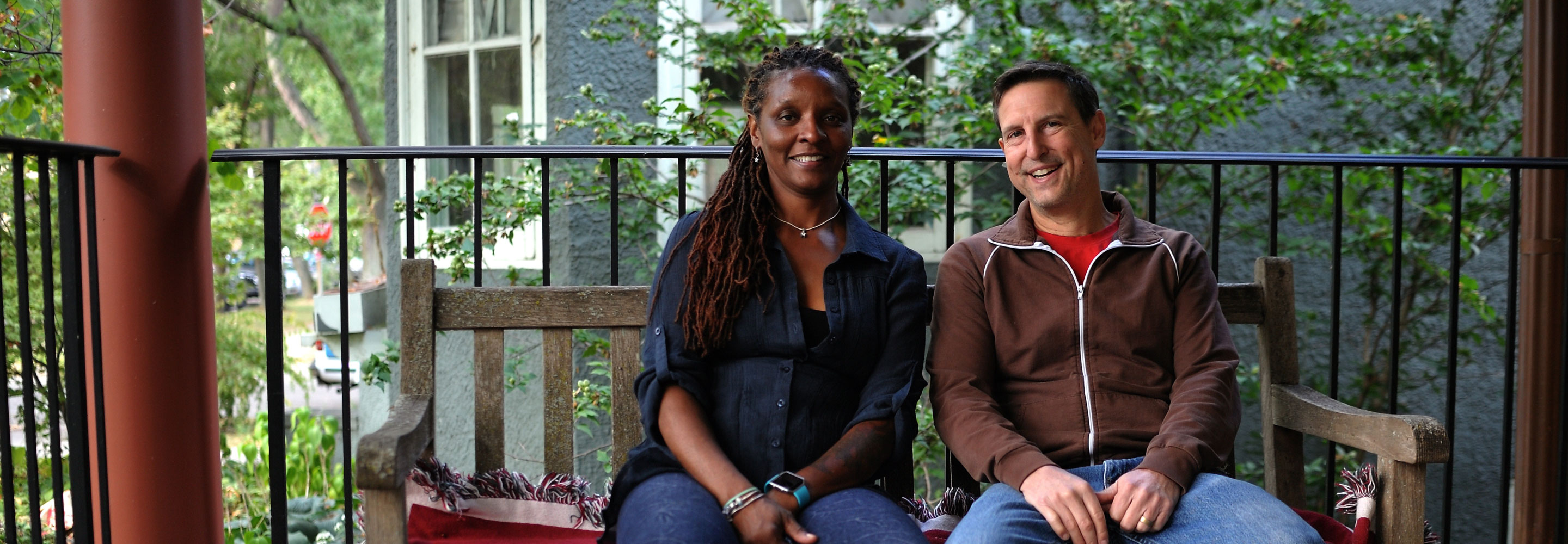
Two "map twins," one from the South Side, one from the North Side, involved in Tonika Johnson's Folded Map Project.
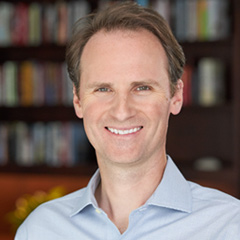
Essay by John Palfrey, President
March 23, 2022
An endless optimism and sense
of possibility informs and
guides us.
Introduction
As we begin to emerge from a global pandemic that changed the world forever, I am reminded of the common sense of purpose we shared at the beginning of this unprecedented crisis. While we made varying choices about how best to respond to protect our families, communities, and ourselves through it all, one thing has remained clear: we are interconnected.
Our collective health, well-being, and reality are shaped by the systems and structures we created long before the pandemic. Our opportunity going forward, in philanthropy and beyond, is to reconstruct something new and better toward eliminating long-standing disparities in race, gender, disability, and anywhere else they exist. While we are in conversation with our past, we are speaking to the present, and imagining the future. An endless optimism and sense of possibility informs and guides us.
To that end, we strove throughout 2021 to change the ways we work and to clarify the values that guide us. These values shape how we relate to each other and our communities and push us to secure lasting improvements in technology, climate, journalism, criminal justice, and other fields in service of our mission.
Everything we do is to bring about a more just, verdant, and peaceful world. We do that through a laser-focus on supporting our grantees in their work to serve communities and to bring about lasting change. The organizations and people we support are our inspiration and motivation—they model the passion, commitment, and creativity necessary to ensure that all people have the opportunity to thrive.
Proximate Leadership
At MacArthur, we follow the lead of our grantees because we know that proximate leadership—rooted in spaces, communities, and experiences—is critical to the successful pursuit of our mission. The solutions we seek are best designed by leaders who share the experiences and identities of the communities we seek to serve.
So, we celebrate the work of grantees like Michelle (Mush) Lee, a child of South Korean immigrants, who joined Youth Speaks in 2003 as a staff mentor teaching and writing about what she says she most longed to understand: identity, power, and imagination. As Executive Director, Lee strives to make Youth Speaks a “resilient space for young people and their allies to explore voice, enact radical love, and engage in transformative art that pushes against silos of silence and systems of suffering.”
MacArthur Fellow Catherine Coleman Flowers is an environmental activist from Alabama bringing attention to a largely invisible problem she saw in her community: inadequate waste and water sanitation infrastructure trapping rural, predominantly Black populations in a vicious cycle of poverty and disease.
Favianna Rodriguez, co-founder and President of the Center for Cultural Power, is an interdisciplinary artist, cultural strategist, and social movement leader. Her art and activism focus on migration, gender justice, climate change, and racial equity, and her organization empowers artists to ignite change at the intersection of culture and social justice.
Through her work, social justice artist and Leader for a New Chicago award recipient Tonika Johnson explores the city’s disinvestment and invites individuals to start a dialogue about how our urban environment shapes social networks. Her latest project, Inequity for Sale, took inspiration from a report on land sale contracts in the ‘50s and ‘60s. More than 100 homes in Englewood, Johnson’s own neighborhood, were stolen from people who thought they owned them. Inequity for Sale includes installations at the sites of this “legalized theft”, embodying how the past injustice creates present inequity in Black neighborhoods.
These extraordinary leaders are counted among a host of others opening doors to new ways to respond to society’s most pressing needs in pursuit of a more equitable future.
Connecting Mission to Values
Importantly, our values guide us to follow and trust leaders who are proximate to their communities. Last year, one of our most important endeavors as a Foundation was coming to a shared definition of the values that animate our work.
MacArthur’s values—Creativity; Diversity, Equity, and Inclusion; Empathy; Integrity; and Learning—embody who we are, what we stand for, and how we work.
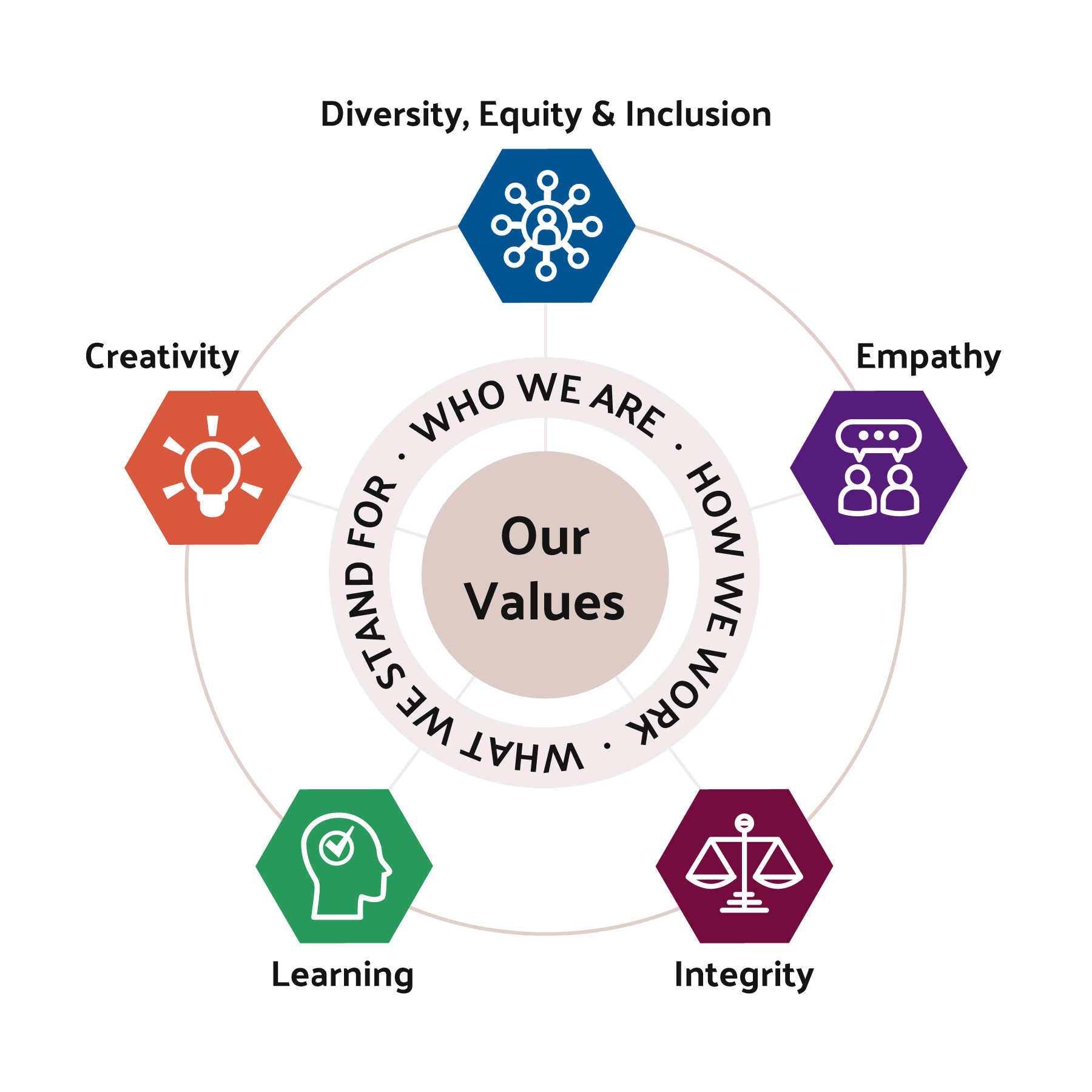
Our values represent a core set of beliefs that guide how our organization conducts itself and builds trust-based relationships with partners and grantees. Our values are deeply rooted in the Just Imperative, through which we ensure that our decisions and actions embrace the unique attributes of individuals, that we create a fair playing field, and that we cultivate environments where everyone feels respected, valued, and a sense of belonging. The values are not just concepts; they are an ongoing commitment to action.
The values are not just concepts; they are an ongoing commitment to action.
In every aspect of our work, we are making room to consider where and how we are living these values. We are working to build them into everything we do: from hiring practices, to how we choose vendors and partners, and how we work with grantees to solicit their feedback. We have already found ways to reflect them more concretely in our practices and partnerships. Many of the highlights from our work to reimagine and reconstruct philanthropy over the past year show our values in action.
Scaling our Work for Impact
As our values suggest, we aim to learn about our own work and improve, especially finding ways to measure our impact and adjust as we go. One very tangible metric of our grantmaking is its scale, which indicates the scope of our footprint. But it is also important to look at the outliers, the work that was beyond our ordinary practice, work that pushes us to change the way we operate for the better.
In 2021 we issued 526 grants totaling roughly $376 million. That is the second highest total since 1978. It was higher than it ordinarily would be, in part, because we launched an Equitable Recovery Initiative, which started as an effort to respond to racial injustice and the devastating economic effects of COVID-19. We made an explicit and concerted effort to change biased practices, systems, and structures to support more just, equitable, and resilient communities. As part of the Equitable Recovery Initiative, we deployed approximately $80 million to advance racial and ethnic justice.
Our goal was to allocate more than half of these funds to organizations that are people of color-led or -serving. I am proud to say that we far exceeded that benchmark, with the vast majority of our funding going to Asian-led, Black-led, Indigenous-led or Latinx-led, and -centered organizations. Relying on our values of diversity, equity, and inclusion, we are working to sustain this focus on funding communities that have been historically excluded in philanthropy.
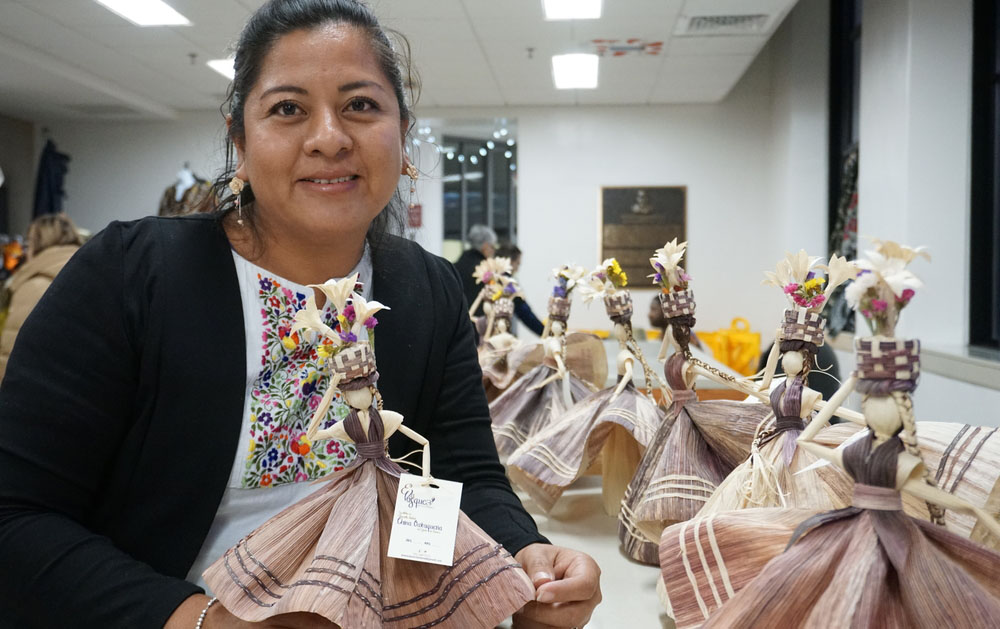
Other grantmaking that aimed to meet the moment included supporting the visionary work and leadership of Nikole Hannah-Jones to create the Center for Journalism and Democracy at Howard University. Hannah-Jones and Ta-Nehisi Coates, MacArthur Fellows from the class of 2017 and 2015 respectively, joined the Howard faculty with a special focus on training and supporting the next generation of aspiring journalists. This cross-cutting grant also supports the next phase of the 1619 project, helping the U.S. confront and repair the enduring legacy of slavery.
We also awarded our second 100&Change grant to Community Solutions to accelerate an end to homelessness in 75 communities—which has since grown to 98—in the United States. For too long, homelessness has been viewed as intractable and pervasive rather than a crisis worth solving. More than 568,000 people experienced homelessness on a given night in the United States, before the pandemic. Community Solutions has proven that people do not have to live this way. The organization’s bold response is primed for this moment because it prioritizes racial equity.
Community Solutions has found that helping towns and cities better connect homeless people to available housing resources is one of the most effective ways to eliminate homelessness once and for all. As part of the Built for Zero movement, it helps localities develop ‘continuums of care’, that address specific needs, on an individual level, with community context and trust.
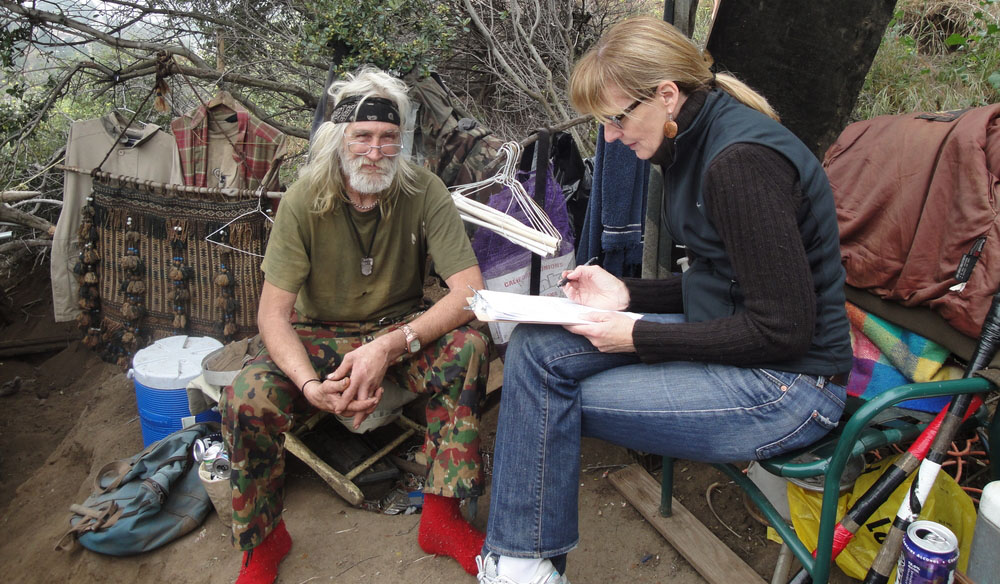
More than 15 communities have reached functional zero—an end state where homelessness is rare and brief—demonstrating that homelessness is indeed curable. By showing that it is possible in these communities, the Built for Zero movement shows that it is possible in any community.
Since the inaugural 100&Change competition, other funders and philanthropists have committed an additional $686 million to support bold solutions by 100&Change applicants. This donor network has been cultivated and nurtured by Lever for Change, our MacArthur affiliate, which manages the 100&Change competition in addition to ten other challenges, and has unlocked more than $948 million in grants and supported more than 140 organizations to date. It is thrilling to see how the team matches donors with problem solvers and leverages our networks to help organizations thrive.
And, we contributed to an international philanthropic initiative to reduce methane emissions around the world, which has raised more than $320 million, making it the largest private pledge in history to address the powerful greenhouse gas that drives at least 25 percent of today’s warming. The initiative supports the Global Methane Pledge, spearheaded by the United States and European Union to reduce methane emissions by 30 percent by 2030. Methane pollution disproportionately impacts people already facing economic and nutritional insecurity and reducing methane pollution can help avoid 400,000 premature deaths and many more respiratory health challenges. This effort emphasizes the importance of collective action on climate change as well as the need to take an environmental justice lens.
Collaboration Across the Foundation
The problems we aim to solve at MacArthur require us to collaborate with each other internally as much as we hope to collaborate with our partners and grantees. We understand that the ways we work have intended and unintended consequences. So, we aim to cultivate empathy, and challenge ourselves to look for new, more just ways of working internally as well as externally.
Staff collaboration was a central focus of our work at the Foundation in 2021. One of its most promising results was a 12-month report we produced assessing the Equitable Recovery Initiative, with lessons on how the collaboration benefited and challenged us.
Sixty-three percent of grant organizations were first-time MacArthur grant recipients.
The findings made clear that our earliest efforts to disrupt the status quo are working. Sixty-three percent of grant organizations were first-time MacArthur grant recipients. This milestone was possible for a variety of reasons. Collaboration emerged as the cross-cutting theme. Staff, leadership, and external advisors leveraged their networks to recommend organizations to fund. Staff worked with other funders to quickly learn about organizations and collaborations that could support the initiative. And Staff engaged 24 fiscal sponsors which helped us reach new organizations, especially organizations that are most proximate to people of color communities.
We have been working from home for two years now, and I credit our Staff in Chicago, India, and Nigeria for the impressive depth of collaboration we consistently achieve.
I look forward, in 2022, to resurrecting a previous idea: developing mechanisms for “silo-busting” to encourage cross-program investment by encouraging programs to propose collaborative grants across strategic areas. We managed this silo-busting through the Equitable Recovery Initiative and can learn from that experience to foster future innovations.
A New Way Forward - Common Grant Application
In the spirit of dismantling old structures, I am enormously encouraged by the growing momentum in philanthropy for a sector-wide grantmaking solution grounded in a conscious shift toward giving the diverse communities we serve greater freedom to pursue their missions.
We are working with our partners on an initiative, known as the Philanthropy Data Commons, to develop a sector-wide common grant application that will allow for more equitable access to resources, democratize data sharing among grantseekers and funders, reduce applicant and funder administrative burden and paperwork, streamline the application process, expedite access to capital, and lower the costs of applying for and awarding funding.
This effort is different from past attempts to create a common application in philanthropy because it sets aggressive deadlines for project development and creation, prioritizes the grantseeker perspective and experience, and takes a sector-wide solution approach by involving grants management vendors, infomediaries, grantseekers, funders, and more. It has the potential to truly shift how philanthropy engages with grantees.
John Palfrey talks to Knight Foundation President Alberto Ibargüen, about diversity in newsrooms, shared investments in journalism and media, and supporting local news. View the full conversation View the full conversation
Collaborating for People Power
In each of these areas—supporting proximate leaders, expanding our grantmaking, collaborating with colleagues, enacting a common application—it is essential to have collaboration, trust, and empathy, along with the firm belief that we can imagine and create a better future.
Creating a just, verdant, and peaceful world requires multiple stakeholders across sectors working together to create solutions for people our old systems have left behind. Guided by our values, we also know that our highest hopes for the future will only become reality if the people we serve are armed with the tools to push their leaders for meaningful change.
Earlier this year, MacArthur took action to move the needle on both of those fronts. We partnered with several funders to support Chicago Public Media’s acquisition of the Chicago Sun-Times, preserving local journalism and enabling Chicagoans to be informed citizens who can hold their leaders accountable. Our partners included the Builders Initiative; Chicago Community Trust; and the Joyce, Knight, Mansueto, and Pritzker Traubert foundations.
Everything we do at scale requires collaboration.
This combination of legacy and new foundations, along with individual donors such as Michael Sacks, Robin Steans, and Leonard Gail, are a part of a large and growing ecosystem of funders coming together to creatively transform old ways of thinking and working. We are all stronger when we pool our resources together. Everything we do at scale requires collaboration.
The merger will connect an unprecedented audience of Chicagoans to the stories and issues that shape their lives. And it will serve as a model for how to protect the vibrancy of journalism and media, one of the most important institutions people rely on to actively participate in democracy.
Collaborations allow us to level up. And, because we are all connected by shared experiences, they are essential to getting big things done.
We aim to dismantle old structures in favor of new and better ones. This requires us to acknowledge how our histories have shaped our present and inform the future we ultimately create. I look forward to collaborating with our partners and grantees this year and beyond to usher in a new world of possibility.

I invite your comments, suggestions, and critique, with special appreciation for a candor that will challenge us to achieve greater clarity, humility, wisdom, and impact.
Please Share Your CommentsMore Annual Essays
READ MORE


